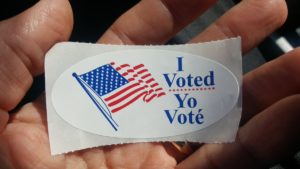
Early numbers suggest higher-than-expected turnout among Latino voters in the 2018 midterm elections, spurred in large part by massive grassroots campaigns led by Latino civil rights organizations that were two years in the making.
The final numbers for 2018 have yet to be tallied, but experts are pointing to figures from several areas with high Latino populations that indicate record participation compared to previous elections, with hopes of building on that success in 2020. Matt Barreto, a Democratic pollster who specializes in the Latino electorate, highlighted turnout in Latino-heavy areas where advocacy groups began ramping up their outreach efforts in 2016.
In El Paso County, where the population is more than 80 percent Hispanic, voter participation in this year’s midterm elections jumped 168 percent from 2014. And in another Texas jurisdiction, Hidalgo County, which is 92 percent Latino, the number of ballots cast for Senate candidates more than doubled.
While much of that increase can be credited to campaigns like Rep. Beto O’Rourke’s (D-Tex) Senate bid and Trump’s rhetoric, early engagement with unlikely voters played a key role, activists said. “Two years ago, when we realized that the White House had been won by someone who hates immigrants and communities of color, we knew then we had to work very hard to fight this year’s election for the future of our communities,” said Ben Monterroso, executive director of Mi Familia Vota, a civil rights group focused on Latino and immigrant voter participation.
Organizations like Mi Familia Vota and UnidosUS, the country’s largest Latino civil rights group, focused their efforts on educating Latinos on the voting registration process. “If you’re a Latino or a Latina, the odds are stacked against you on what someone who is not Latino will have to go through to register to vote,” said Janet Murguia, president and CEO of UnidosUS.

Recent Comments